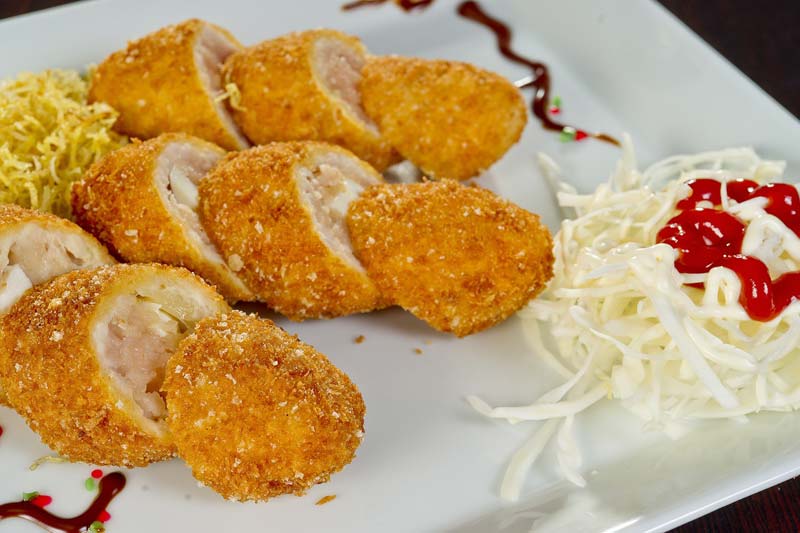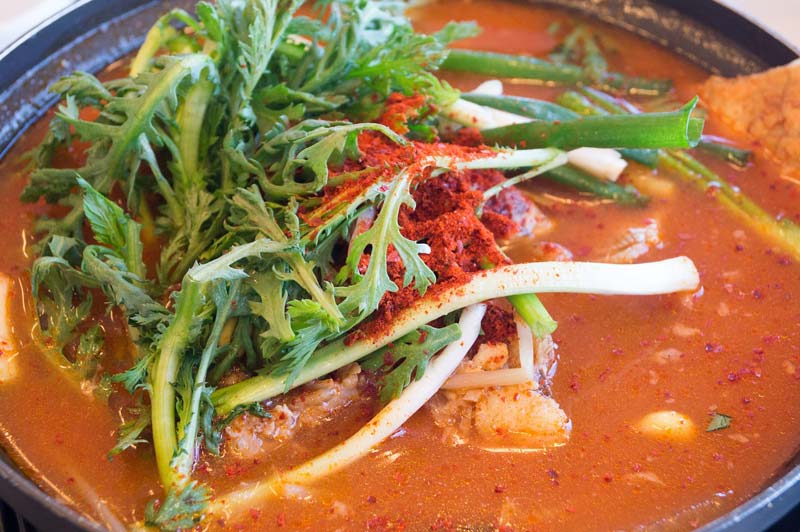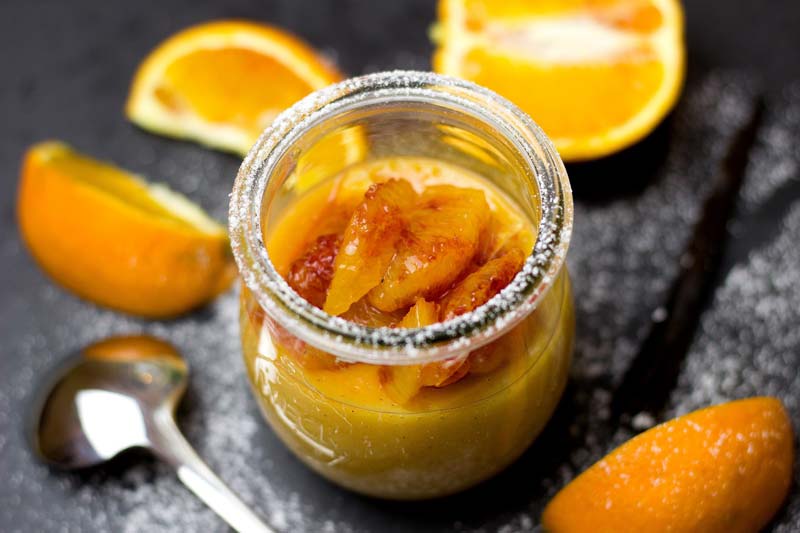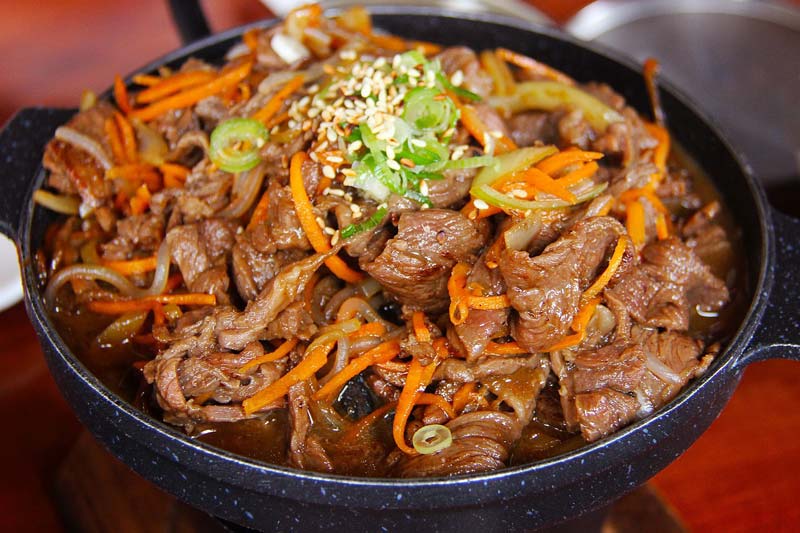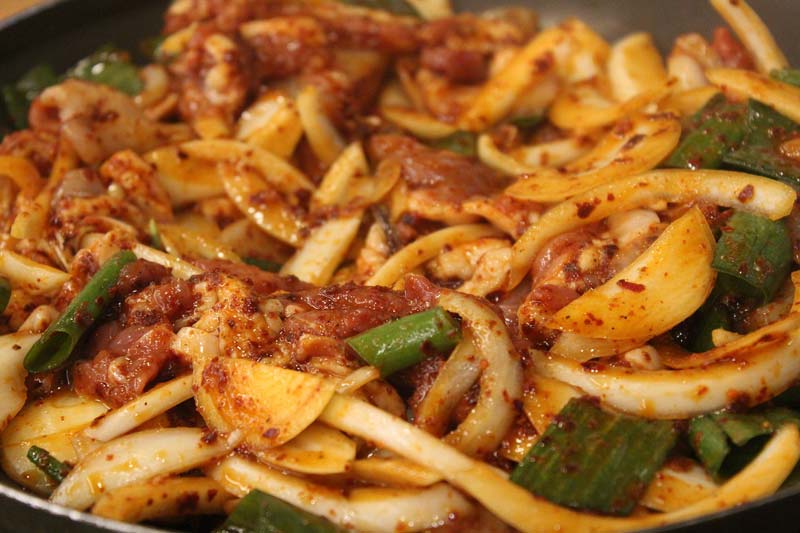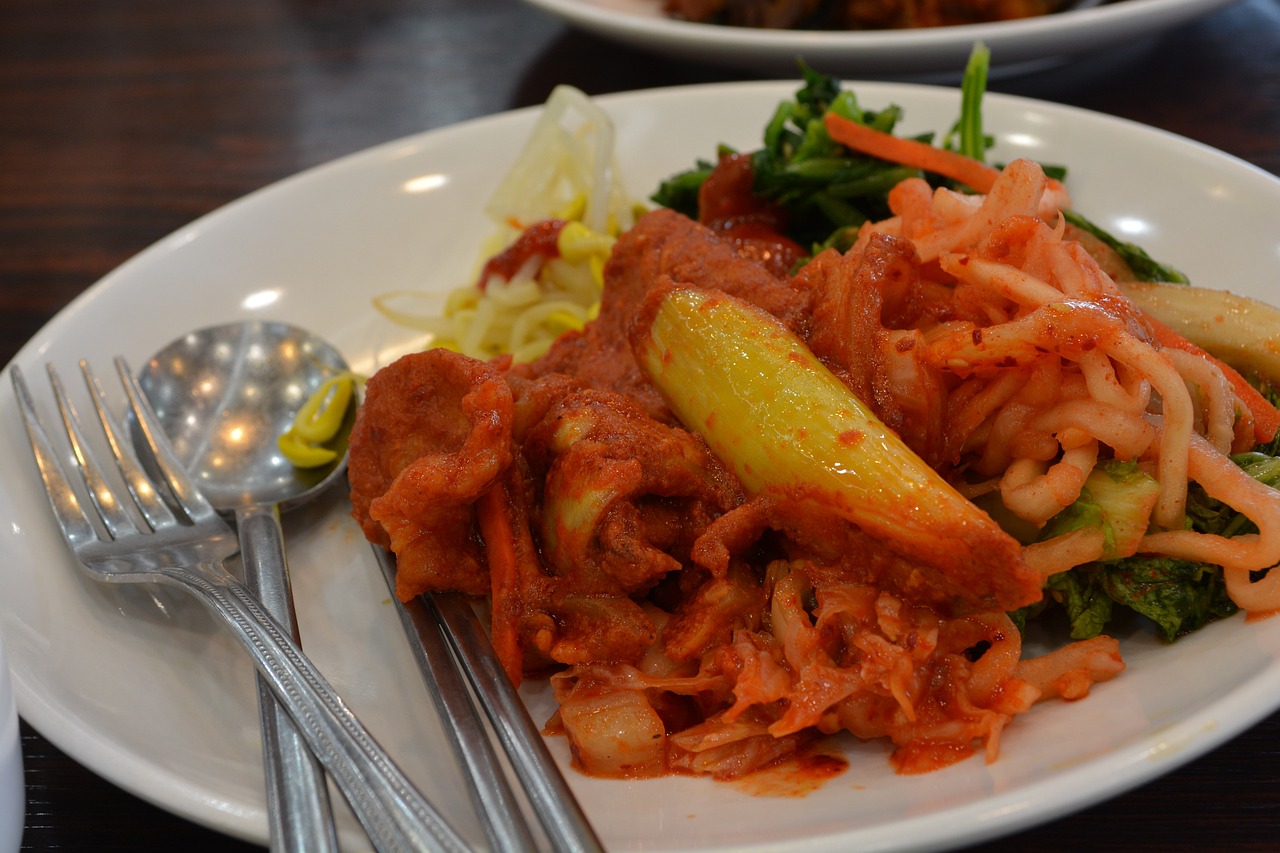Palace food of Joseon (previously spelled Chosun) dynasty was designated as an important intangible cultural asset No. 38 on December 30, 1970. In palace, foods were prepared by court ladies in charge of kitchen who have outstanding skills in cooking and a cook with the title of ‘Daeryeongsuksu’. As the palace foods used the best quality materials from respective villages, the palace foods are known to represent the traditional foods of our country.
Palace foods are not entirely different from those of common people, as marriages in the palace were not done among royal family but had to be done with bride or bridegroom from gentry families. Palace foods were bestowed to commoner’s house and foods from gentry family were presented to the palace as marriage customs and naturally there were exchanges of foods between palace and gentry families.
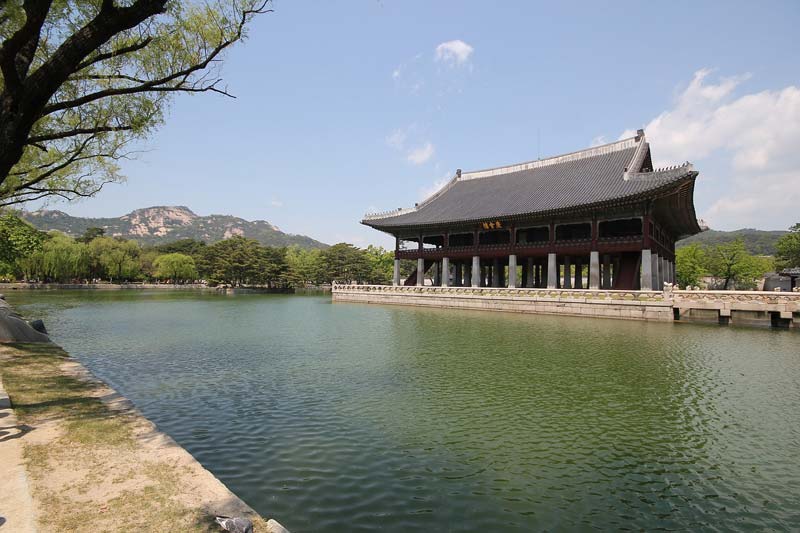
Gyeongbuk palace, dynasty Joseon. fot. youinyoun / pixabay
As such palace foods in Joseon dynasty were not entirely different from common foods but we can say that the palace foods can be perceived as models of common foods but class foods. Especially in Chosun dynasty, palace foods and food system had so real variety that they represent the foods of our country.
Full course meals in palace are categorized into ordinary meals, Banquet festive course (“Jinyeon sang”) which was served at the time of auspicious occasions for royal family, Reception festive course (“Youngjeob-jinyeon sang”) which was served at the time of the reception of foreign ambassador, wedding ceremony course (“Gyobae sang”) which was served at the time of wedding ceremony and sacrificial ritual course (“Jerye sang”) which was served at the time of sacrificial ritual ceremony.
There were five ordinary meals a day, which were breakfast and dinner called “Surasang”, meal for very early in the morning called “Chojoban”, meal for lunchtime called “Natgussang” and meal for late night called “Yacham”.
Ordinary meals
Surasang( Meal)
The most important part in the palace foods is Surasang. Surasang is served to the king and the queen respectively. The King was supposed to sit in east side and the queen in west side. The procedures for preparing foods for Surasang was so complicated that only designated people are allowed to make the foods.
Surasangs in ordinary time used a set of tableware with 12 dishes and bowls. Two kinds of steamed rice and soups are prepared respectively and basic side dishes plus 12 items of side dishes put in small plates were served. White steamed rice and red bean steamed rice were prepared together with seaweed soup and ox bone soup, all of which are prepared based on the List of Side Dish.
Clear pot stew and bean paste pot stew are served and boiled meats and raw vegetables are served. In the case of casserole, casserole and charcoal burner are prepared with materials of meat, vegetables and spices and casserole is served with immediate cooking on the spot.
For kinds of kimchi, “Dongchimi” kimchi was placed in right side of dining table, cabbage kimchi in the center and cubed white-radish kimchi in the left side while separately preparing soya sauce, vinegar soya sauce, vinegar hot pepper paste, salted shrimp, mustard juice and seasonings in tiny bowls on the dining table.
12 items of side dishes consisted of (1) roasted meat, (2) shish-kebab, (3) fried fish, (4) boiled meat slices, (5) raw vegetables, (6) boiled vegetables, (7) hard-boiled food, (8)preserved salted fish, (9) Soy seasoned dried vegetables, (10) roasted salted dry fish, (11) special side dish and (12) raw fish or steamed sliced fish covered with starch. Scorched rice tea is served next to soups.
Setting of dining table should be always 12 items of side dishes and 3 kinds of dining tables are used, which are large size round table, small size round table and square study table.
Large round table is for the king, small round table is for a court lady called ‘Gimi sanggung’ who takes foods before the king to test the existence of poison in the foods) while cooking court lady called ‘Jeongol sanggung’ prepares casserole.
Dining table with setting of 12 items of side dishes is strictly restricted only for the use of the king and queen, and even royal family members cannot use it. In the palace, even number of 12 tableware set is used while gentry families and general level people can use tableware in odd number like 9 tableware set for gentry families and 7, 5 or 3 tableware set for general level people.
Natgeot sang (Lunch)
The word for lunch in Chinese means ‘marking a point in mind’ and therefore very light meal with liquid diets such as thin gruel or porridge or tea and cakes are served.
Myeon sang (Noodle course)
On the occasion of festive days and birthdays, noodle course is served for guests, in which various flour cakes, fruits, noodle and side dishes are served together. For main dish, one out of hot noodle, cold noodle, rice cake soup or dumpling soup is served and side dishes such as steamed meat slices, raw fish, pan-fried food and Korean casserole are served together.
Chojoban (Early breakfast)
This refers to a meal for very early in the morning, which is relatively simple meal. Porridge, starch porridge (“Eung-ee”) or thin gruel is served as main dish and two to three side dishes out of dried fish, dried meat, minced dry female croaker, minced dry pollack or salted dry fish are served. Salt, honey and soy sauce in a tiny bowl are served together.
White rice porridge, pine nut porridge, sesame porridge and black sesame porridge are available for porridge, adlay starch porridge, arrowroot starch porridge, starch porridge are available for starch porridge, and there are two kinds of thin gruel, one is glutinous millet thin gruel which is made by deep boiling of glutinous millet, ginseng, date and shelled chestnut together and the other is 3 harmonized thin gruel (“Samhap mieum”) which is made of glutinous rice, dried sea cucumber, sea mussel and buttock meat.
Banquet food
Feast in palace (“Jinyeon”) and small feast in palace (“Jinchan”)
Table setting for banquet food in palace was different depending on the purpose of event and the meaning of the auspicious occasions.
Table settings for banquet food are categorized into “Jinyeon”, “Jinchan”, “Jinjak” and “Sujak”. “Jinyeon” is a feast offered when there is a national level event while “Jinchan” is feast in small scale offered in the auspicious occasion in royal family. If there is an auspicious occasion for royal family in palace, “Jinyeon” ceremony is held. The ceremony includes birthday and 60th birth for the king, queen, queen mother and queen grandmother, crown prince installation ceremony and the dedication of eulogistic posthumous title of king.
There are also feast offered for the reception of foreign ambassadors at the place called ‘Giroso’ (a kind of reception house). The book which explained detailed procedures for the ceremony related to “Jinyeon” is called “Uigwe”, and the books such as “Jinyeon Uigwe”, “Jinchan Uigwe” and “Jinjak Uigwe” are still remaining.
In order to offer the feasts such as Jinchan, Jinyeon or Jinjak, temporary government agency in charge of the feast called “Jinchan dogam”, “Jinyeon dogma” or “Jinjak dogma” was established and managed the feast.
(foodculture/foodculture3_1.jsp)
